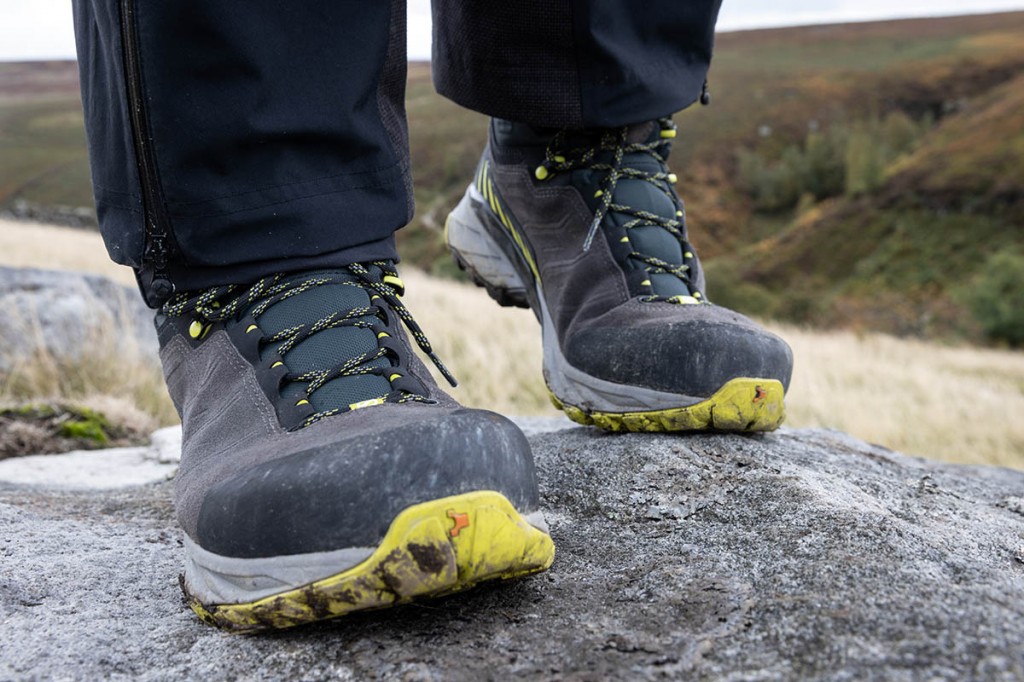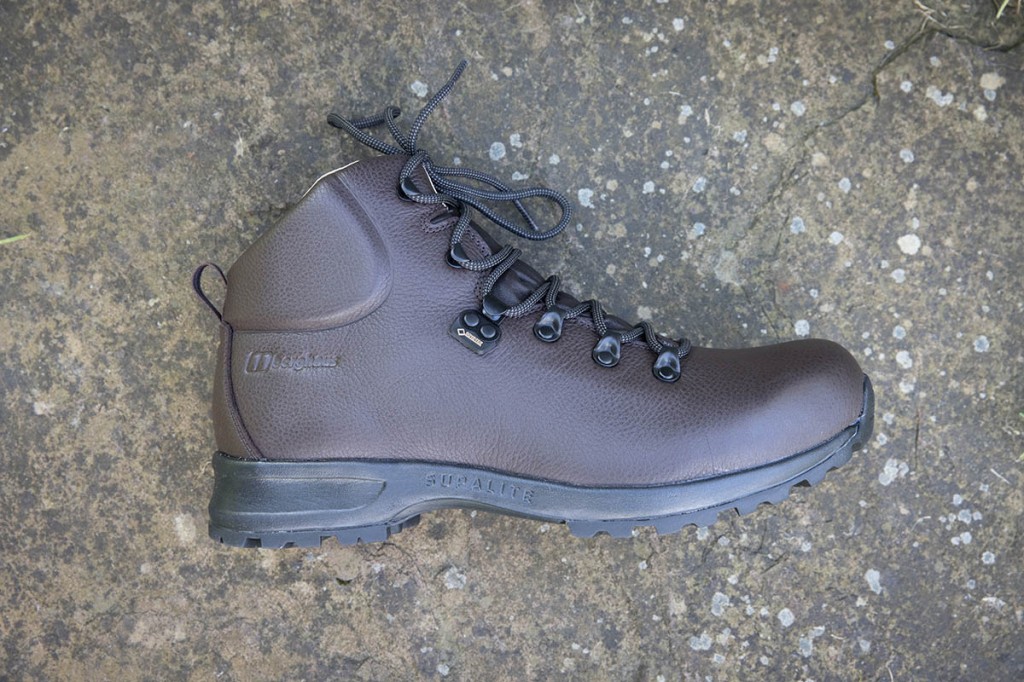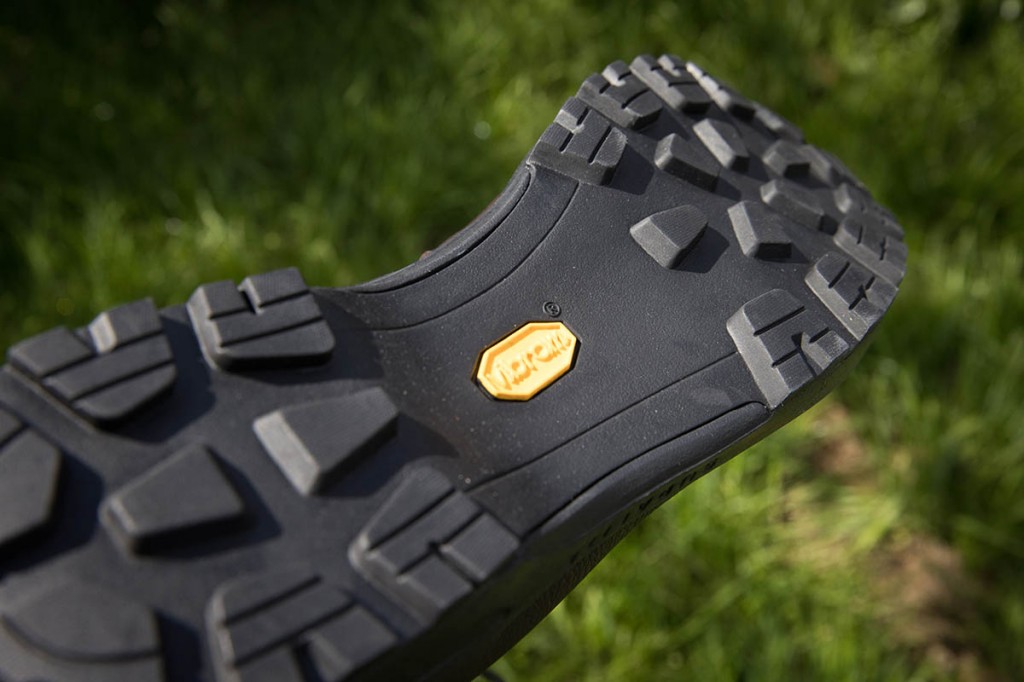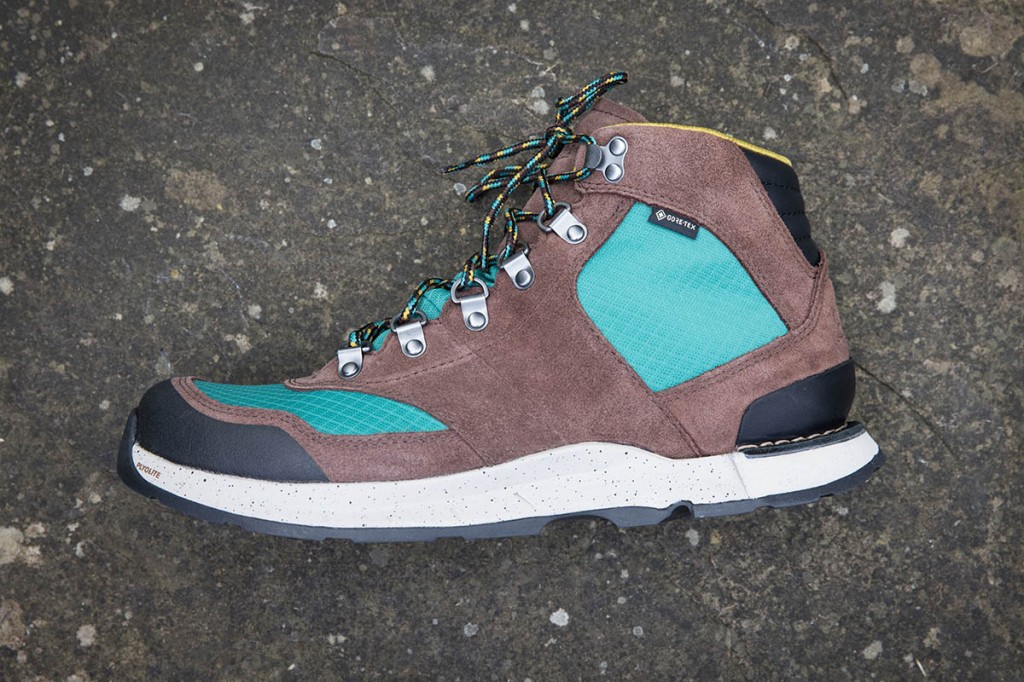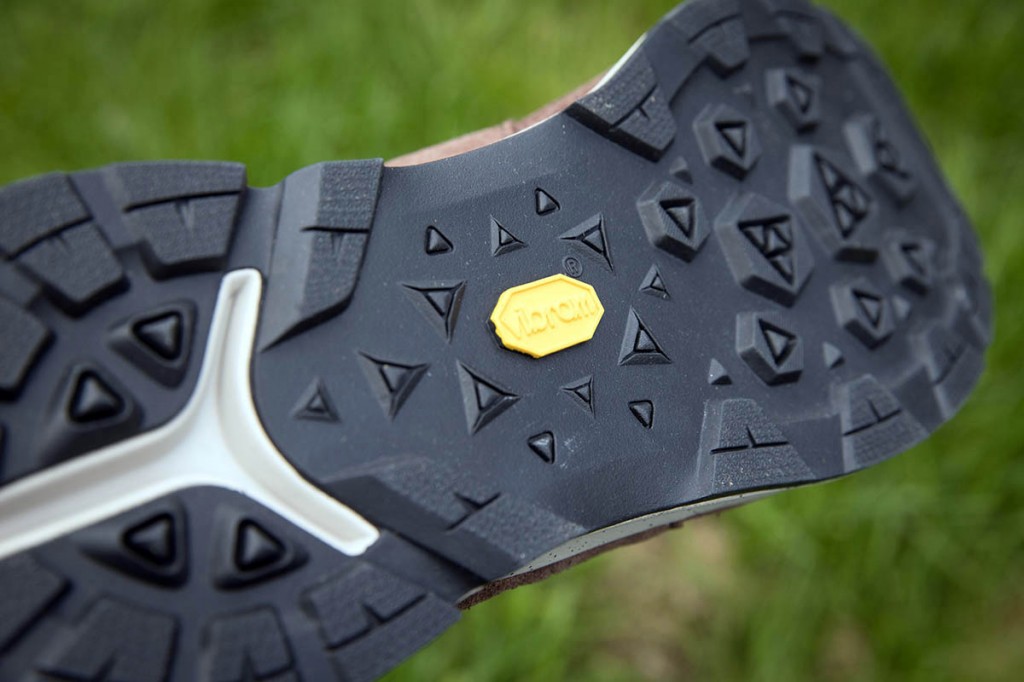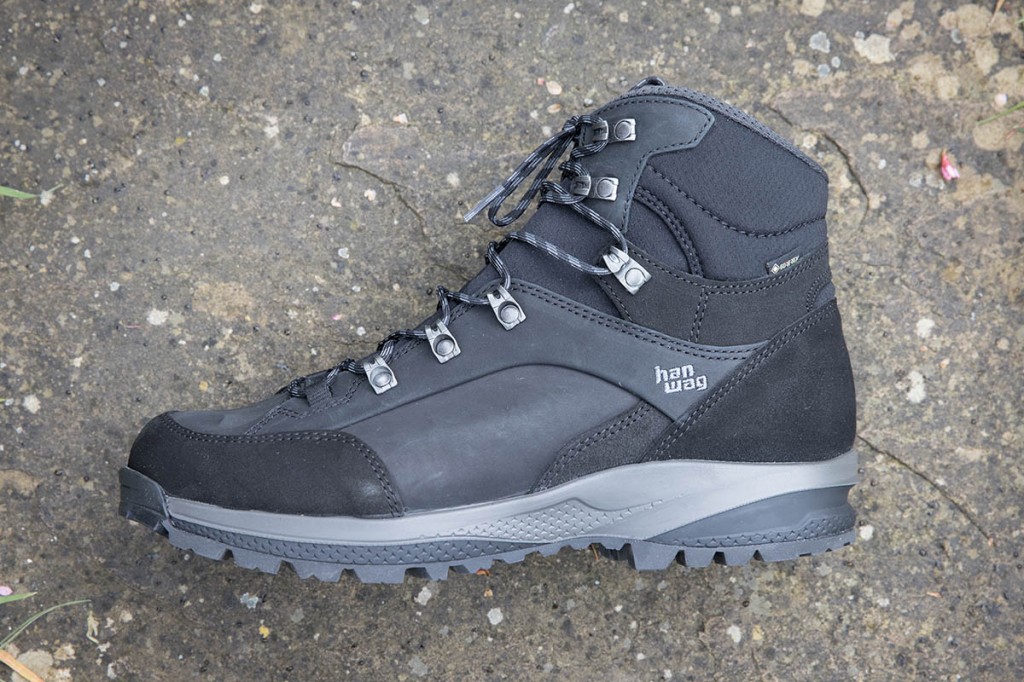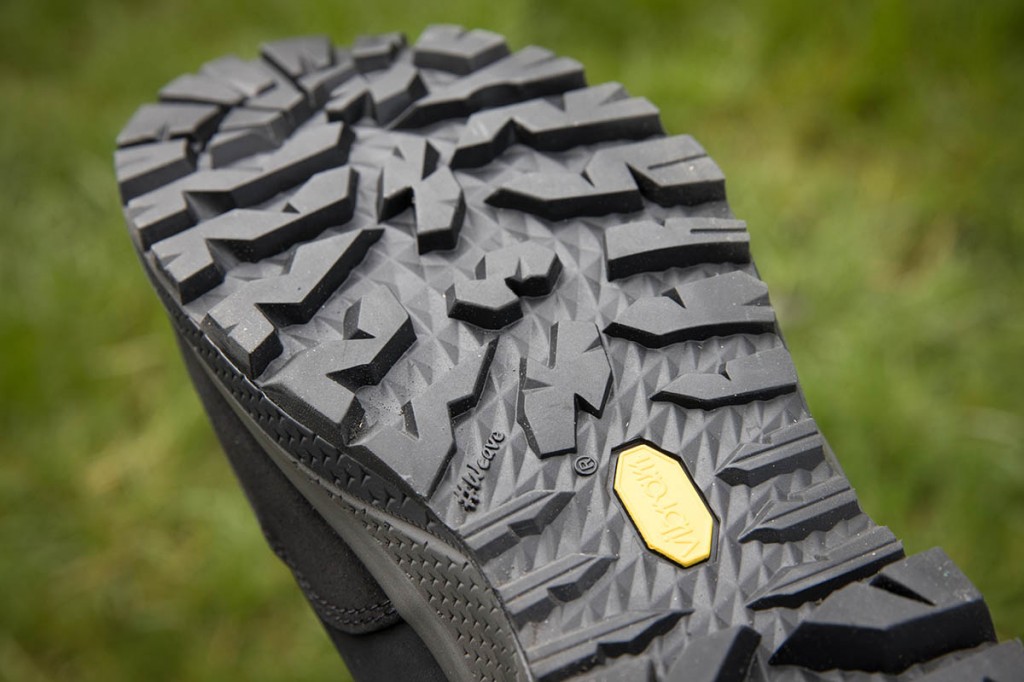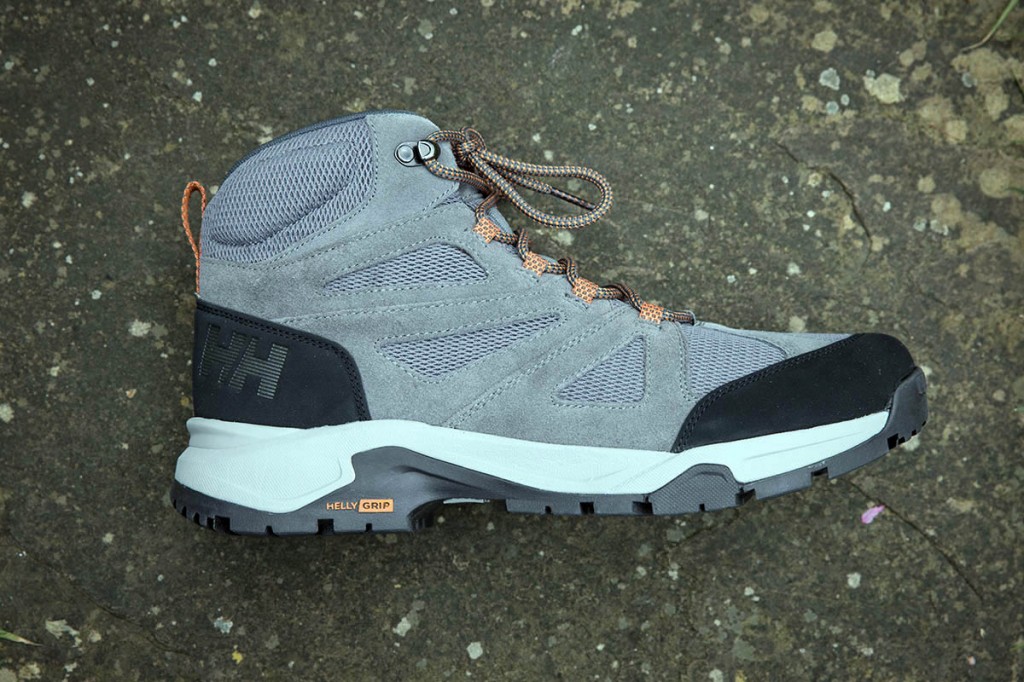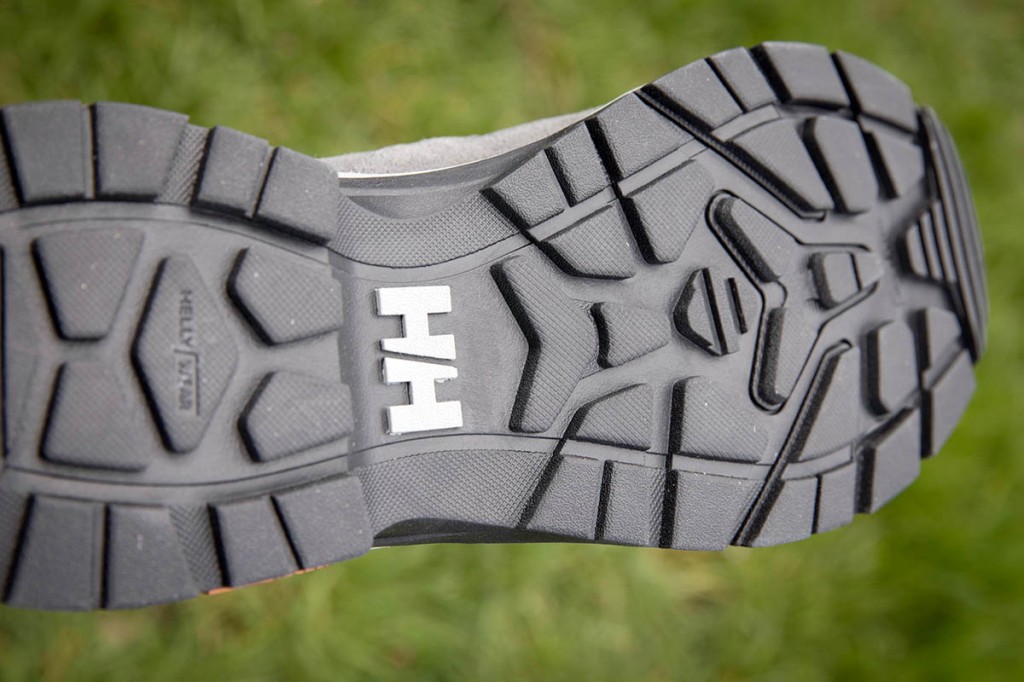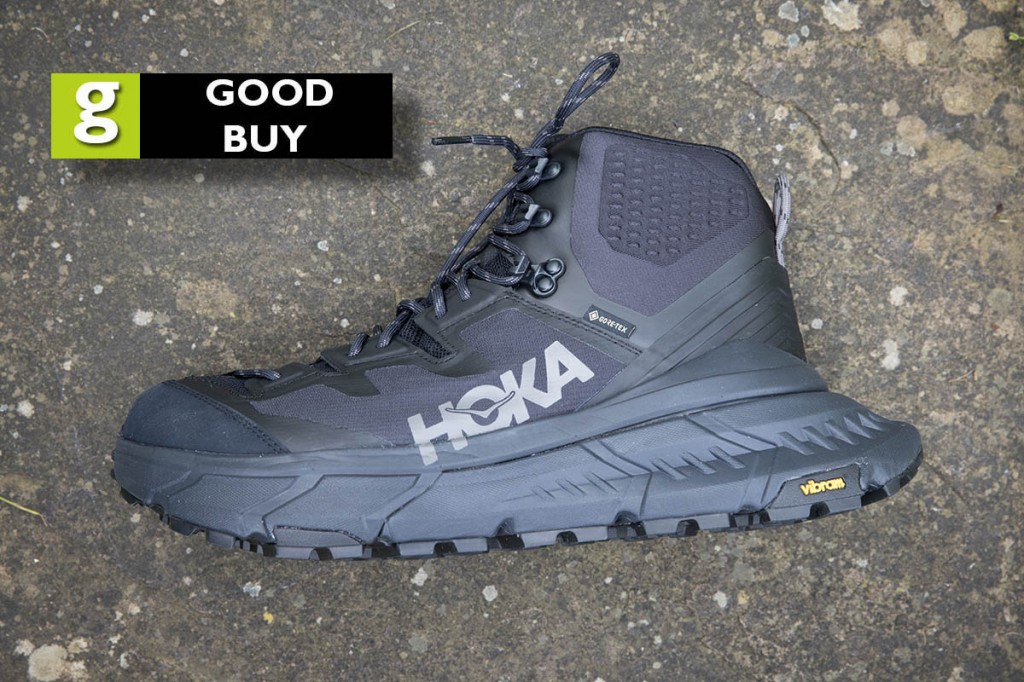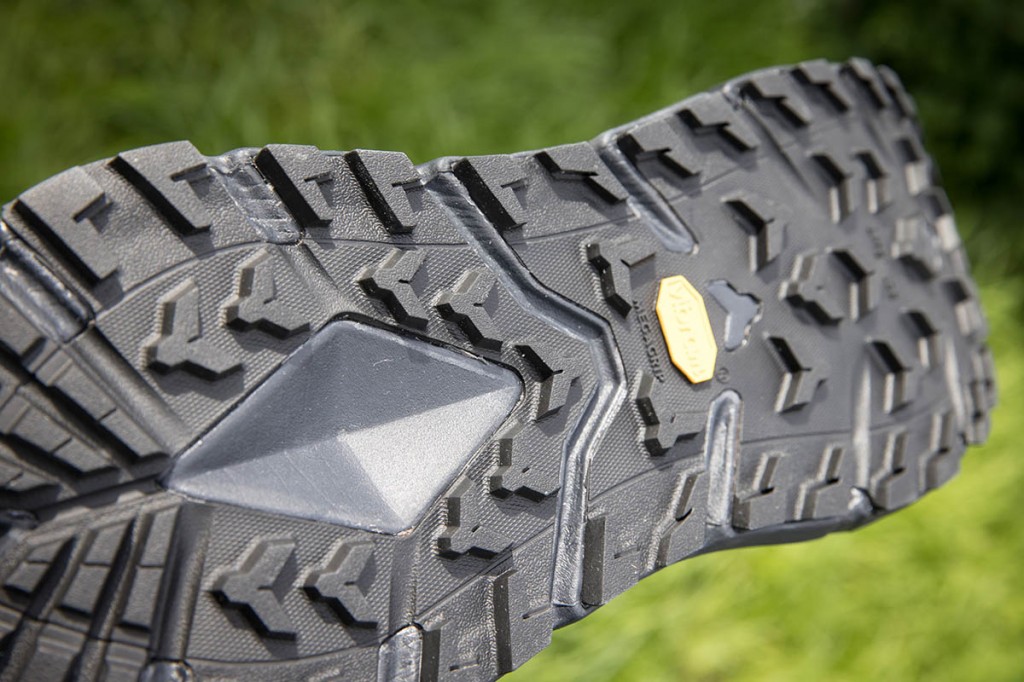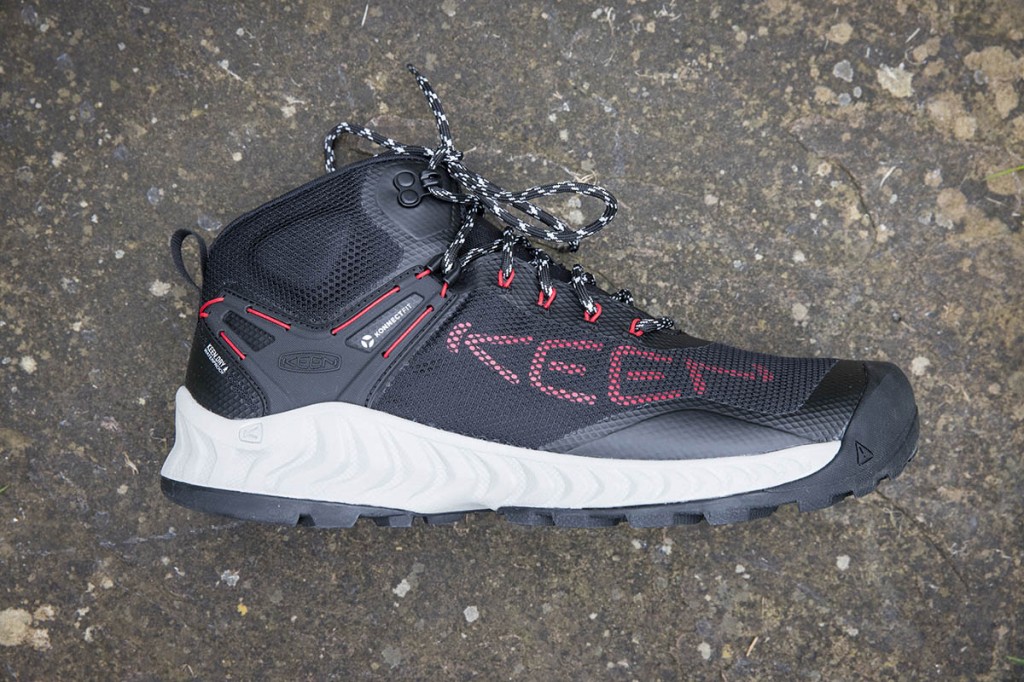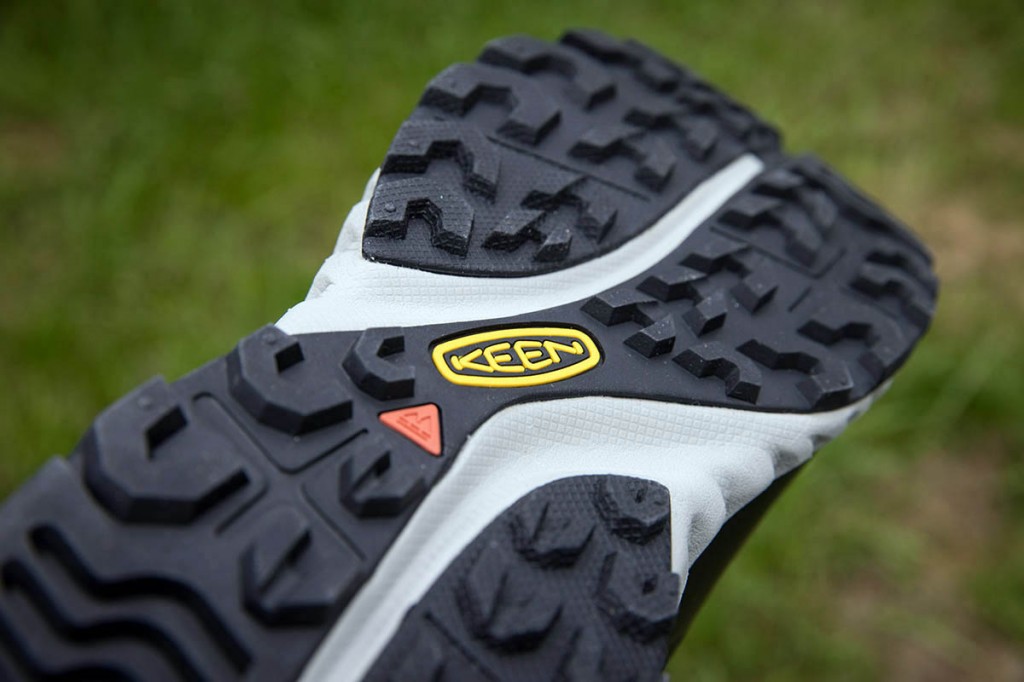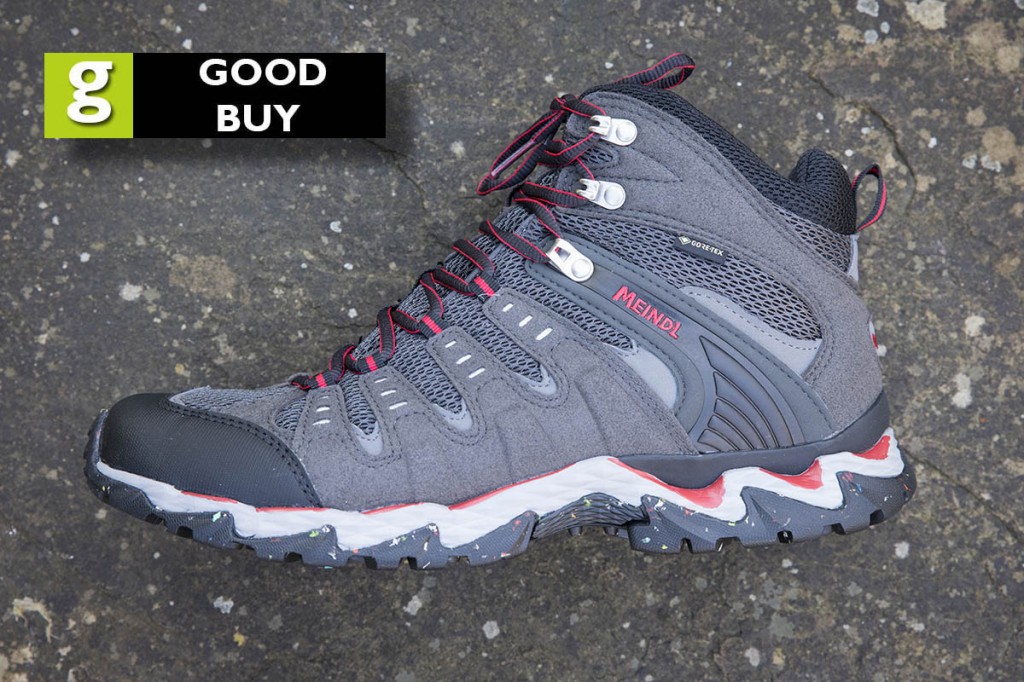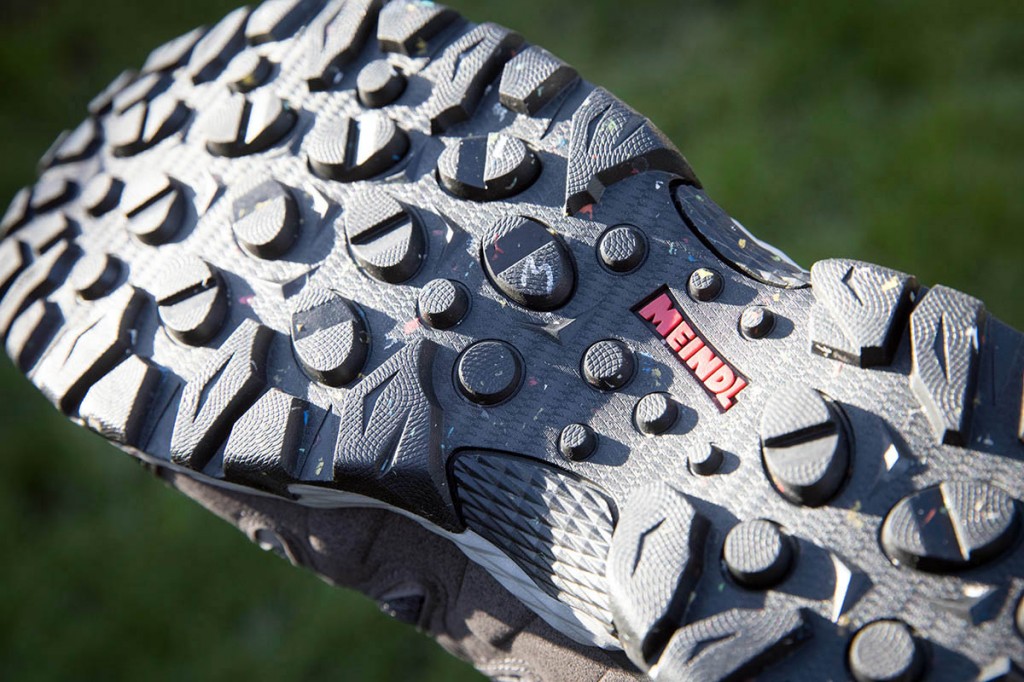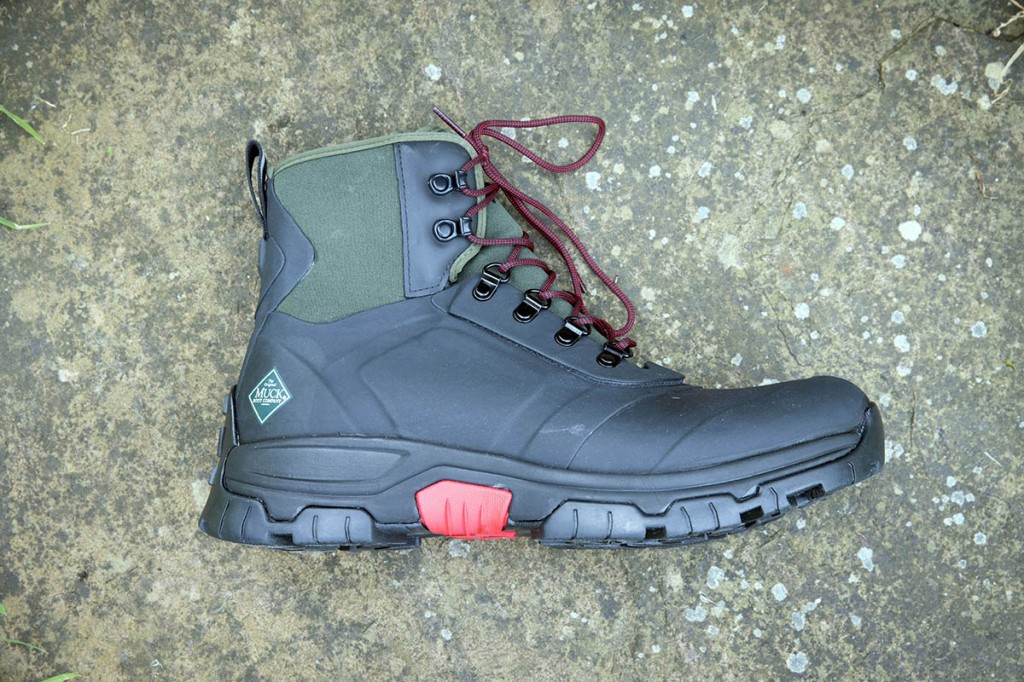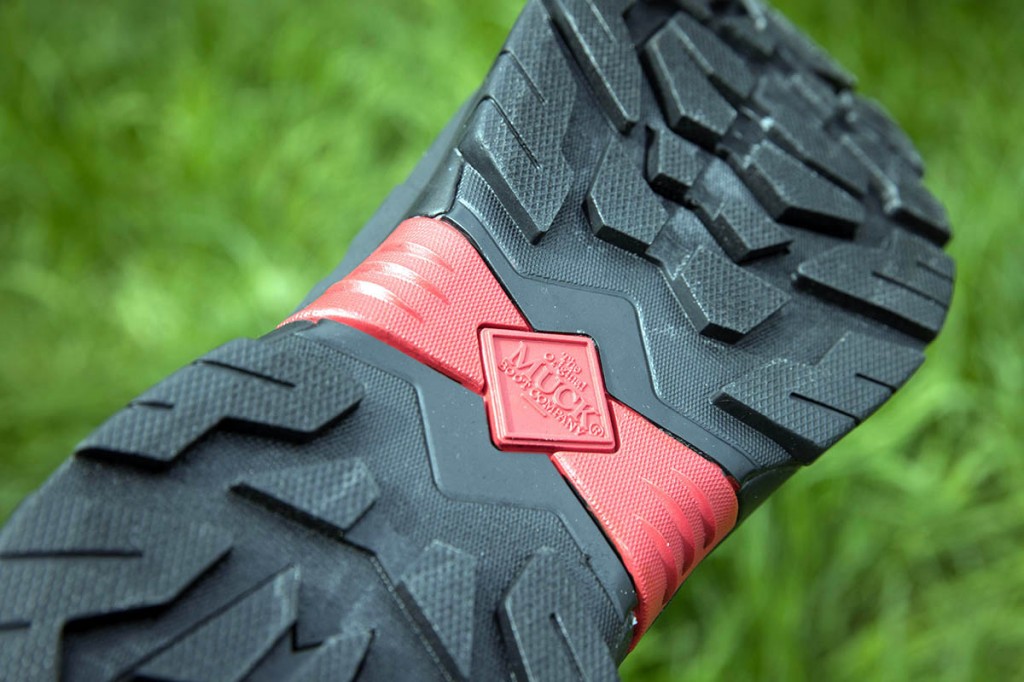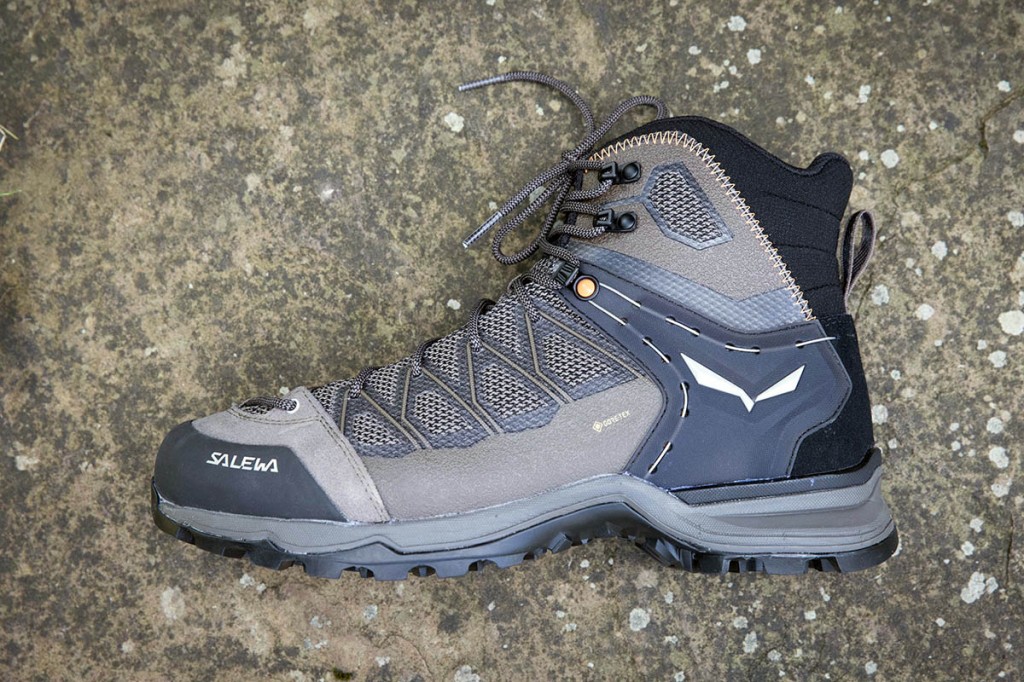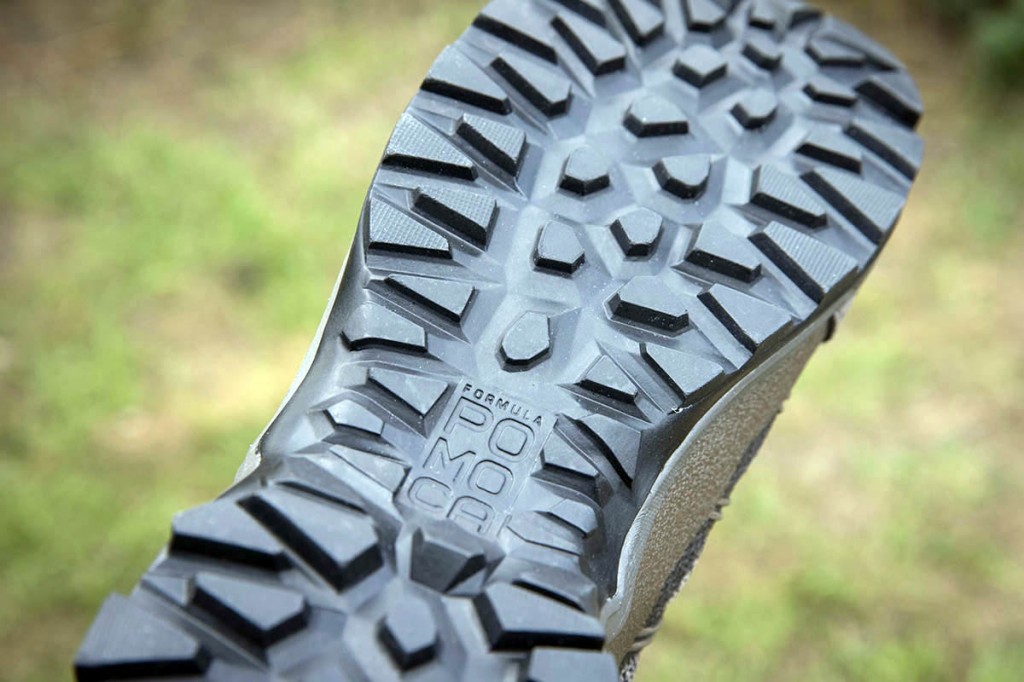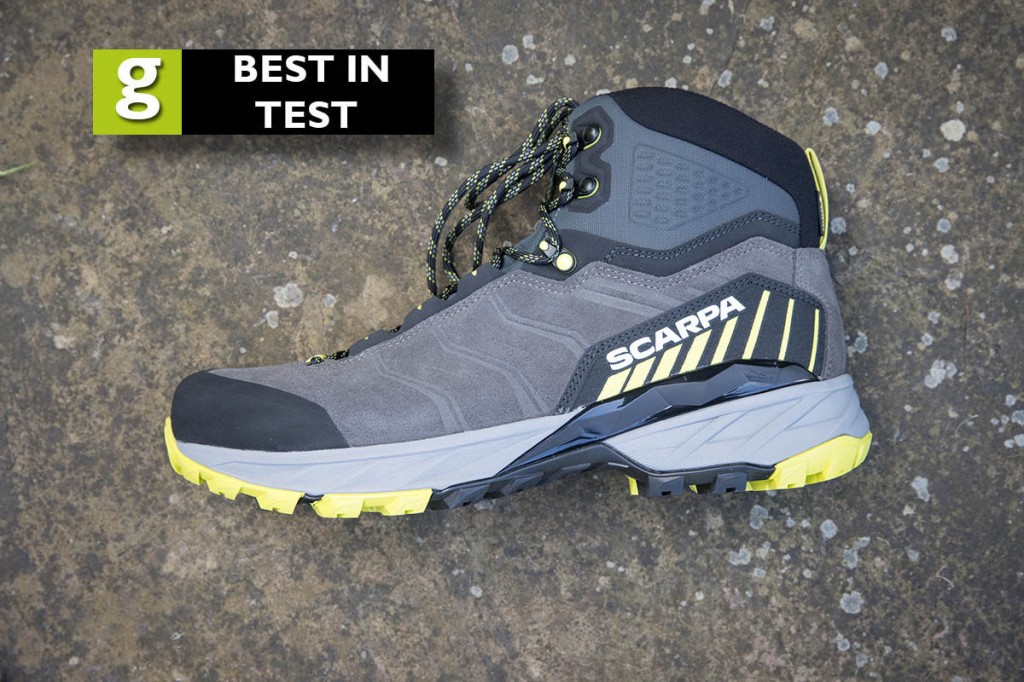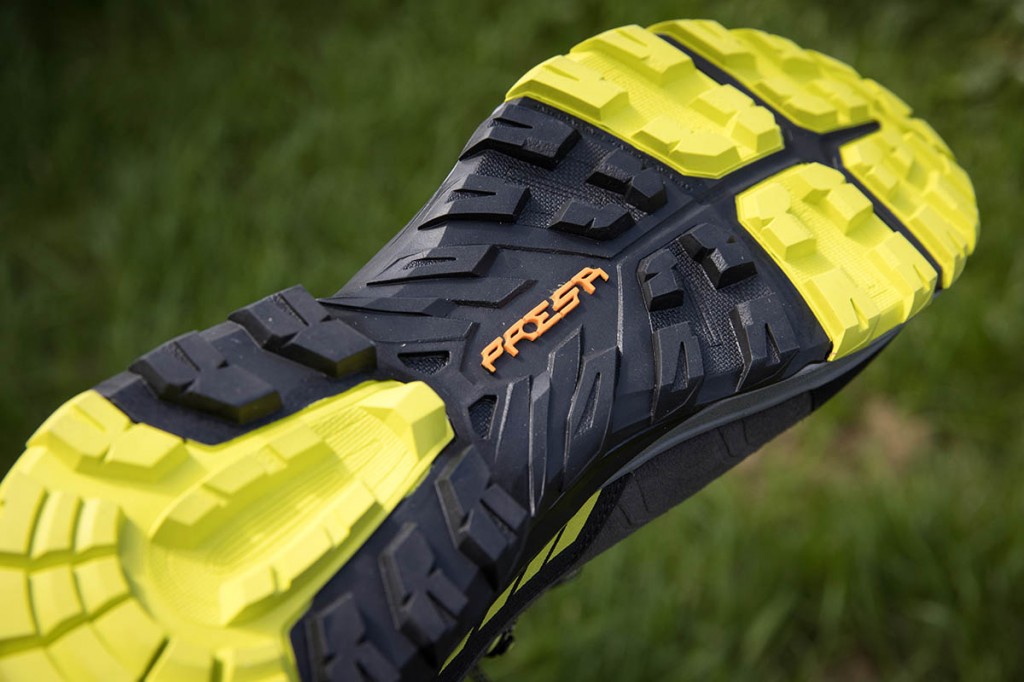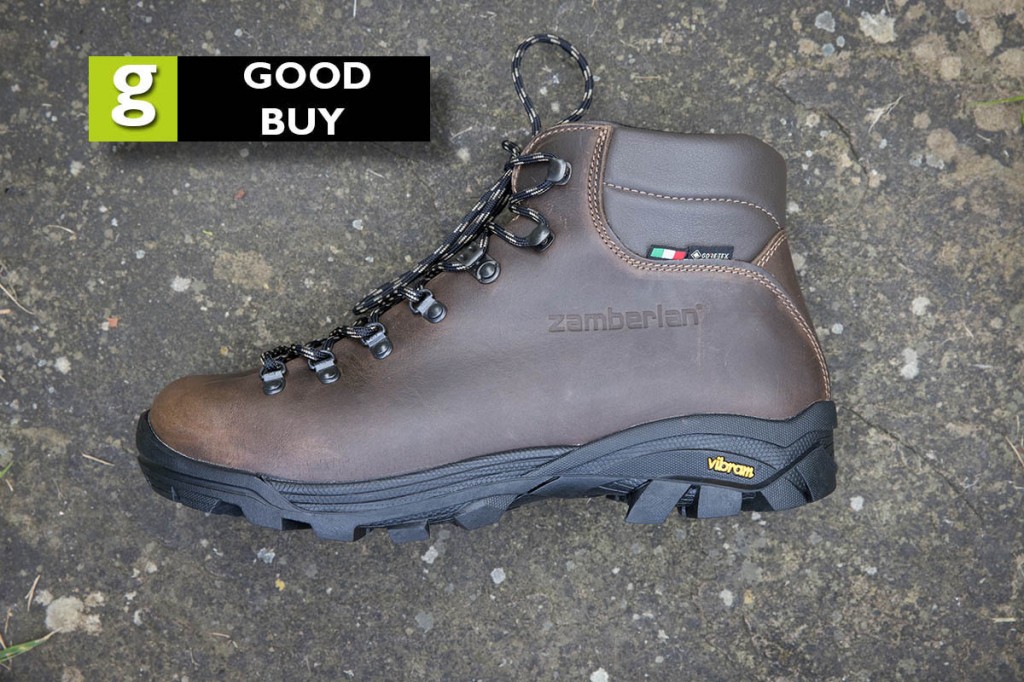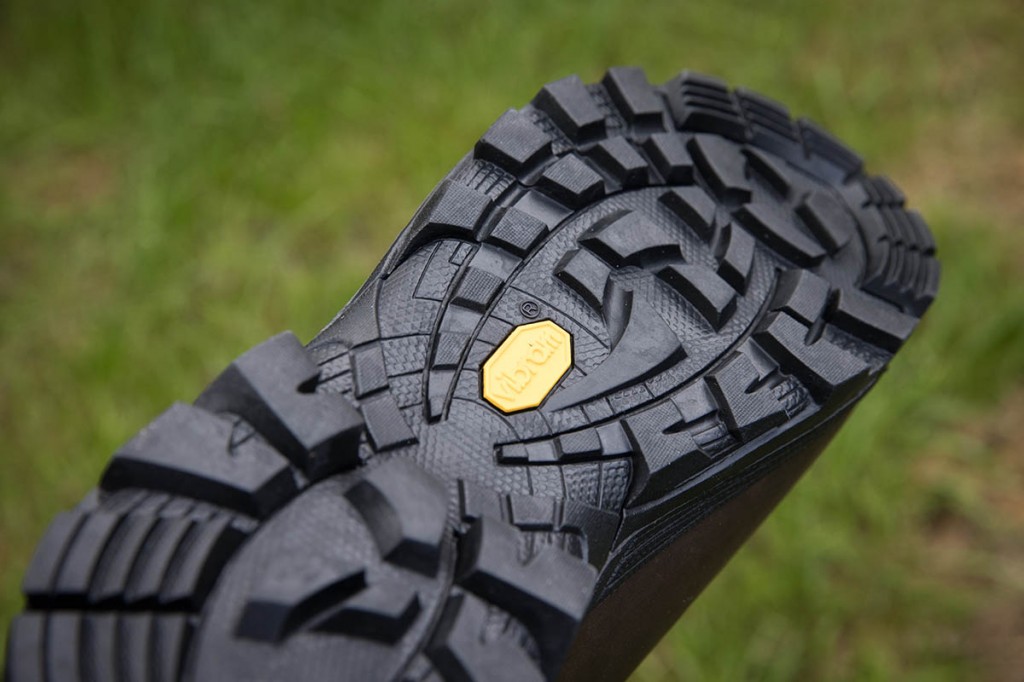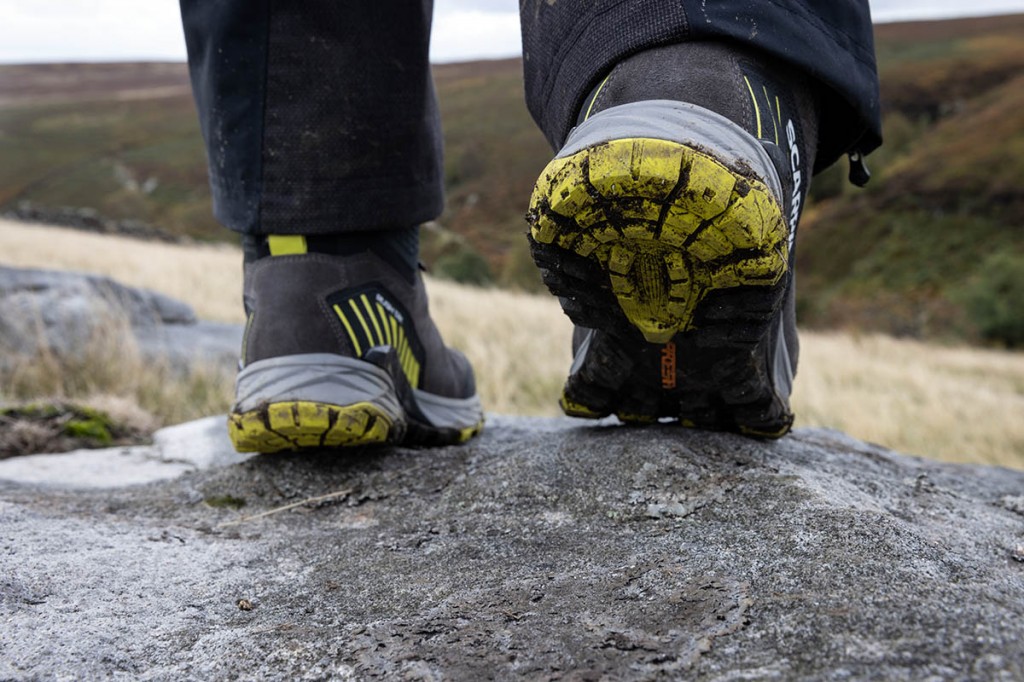Not everyone wants or indeed needs a pir of full-on mountain boots, which tend to be heavy, not always comfortable and quite pricey.
Here, we’re looking at lighter boots more suited to less arduous walking, though some of the pairs tested are actually suitable for tackling the UK’s hills and mountains.
We originally intended to publish this review of lightweight boots earlier in the year, but an unprecedented prolonged dry period meant we had to put testing on hold. With the return of more typical British weather, our forays into the hills and countryside resumed so we could evaluate the performance and comfort of 11 pairs of walking boots.
More than any other piece of outdoor kit, it’s important to try on boots before making your buying decisions. One person’s perfect fit can be another’s route to painful blisters, as everyone’s feet are individual and will suit one last – the form around which boots are designed – better than others.
My own feet are size 9½ (Euro 44), with a broad, but low volume forefoot, so it’s best to bear that in mind when reading the reviews.
Berghaus Supalite II GTX
Price: £165
Weight: 1,128g/pair
Construction: leather uppers
Country of manufacture: Vietnam
Waterproofing: Gore-Tex
Sole stiffness: 5/10
Women’s version: yes
Sizes: men’s 7-12; women’s 4-8
The Supalite II is a traditional brown leather boot that also benefits from a Gore-Tex lining to ensure the rain stays out.
The leather has a grainy pattern and is soft and supple. There’s good foam cushioning round the ankle cuff and tongue, both of which are lined with cream-coloured sheep leather. Lacing is by three pairs of metal loops then three pairs of locking hooks, the first of which is double reinforced and directs the force to the front of the heel section, which I find less efficient at minimising heel lift than cinching the boot in towards the rear of the boot.
The midsole is Berghaus’s Supalite model and the boot has a Vibram outsole with wide-spaced lugs which helped in muddy conditions. There’s no raised rand; the leather upper links in straight to the midsole, though there are internal stiffened sections at the toe box and heel cup to add foot protection.
The outsole also has a small raised extension at the front that covers the toe.
Underfoot cushioning comes from the EVA midsole and an Ortholite insole. This combination provided a middling amount of underfoot protection.
The forefoot is fairly wide and middle volume, though the outer edge at the toe area narrows slightly, and I encountered a little pressure on the outside of my forefoot, though nothing more than mild discomfort. Generally, the boot felt quite roomy. Sizing was about a quarter size larger than normal.
Traction and braking were good. The boots also kept my feet dry even in the wettest weather.
For a full leather boot, the Supalite GTX II tips the scales in the mid-range, so didn’t add too much to fatigue over longer distances. It was at home in the countryside and on the fells of the Yorkshire Dales. The design will suit those who prefer the traditional boot look.
Berghaus doesn’t provide any sustainability information for the Supalite II GTX. Gore-Tex membranes use expanded PTFE, a fluoropolymer. Gore-Tex states that the plastic is inert, insoluble in water, stable and not biodegradable. It does not degrade to become a source of PFCs of environmental concern, it says.
Berghaus says it is reducing carbon emissions by 25 per cent by 2025 with a goal of going net zero by 2030, and is planting two million trees each year for the next three years. It encourages suppliers to source leather from tanneries awarded Leather Working Group gold, silver or bronze certification for environmental best practice and adds 100 per cent of leather in its footwear range is LWG certified.
It is a member of the Ethical Trading Initiative. The company’s offices use 100 per cent renewable energy and sends zero of its waste to landfill.
Best uses: fellwalking, country walking.
Performance 33/40
Comfort 22/30
Quality 7/10
Value for money 7/10
Sustainability 8/10
Total score: 77/100
Danner Free Spirit
Price: £210
Weight: 1,038g/pair
Construction: suede/nylon uppers
Country of manufacture: Vietnam
Waterproofing: Gore-Tex
Sole stiffness: 5/10
Women’s version: no
Sizes: men’s 6-13
Danner says it has designed the Free Spirit with a retro style. The uppers combine suede with sturdy fabric sections.
The boot is a mid-design, with a fairly low ankle cuff. The cuff and tongue are well padded, with ventilation perforations. The tongue bellows reach up to the fourth lace ring.
Lacing is via five pairs of metal d-rings, then a pair of metal lace hooks at the very top. There’s a hardened toe box and heel cup and the Free Spirit has a flexible padded section at the Achille’s area. The forefoot is fairly wide. One important aspect to note is that the pair I tested felt small for the sizing, by about one whole size – something to bear in mind when ordering.
The Danner boot has a Gore-Tex liner to provide waterproofing.
The midsole is dual density, with firmer areas in the edges to enhance the boot’s stability. Combined with an OrthoLite insole with good foam depth at the heel, this provided good underfoot cushioning.
The outsole is Vibram’s Overlook, made with the brand’s Megagrip compound, and has shallow 2mm hexagonal lugs in the forefoot and slightly deeper 4mm ones at the heel. This made for very good grip on rock and hard terrain, but slightly less assured on mud.
The Free Spirit looked at home on the high street as well as in the countryside. It’s not designed for hard, technical mountain terrain but worked well on maintained trails and footpaths. Quality was good and the Danner boots come with a 365-day warranty.
Danner and its parent company LaCrosse provide little information on sustainability. Some Danner boots can be ‘recrafted’, ie repaired rather than replaced, but the Free Spirit isn’t included in the scheme. However, the Danner boots were good quality and proved durable during testing, so we’ve based our rating on that.
Best uses: urban, country walking, trail walking
Performance 34/40
Comfort 24/30
Quality 7/10
Value for money 7/10
Sustainability 5/10
Total score: 77/100
Hanwag Banks SF Extra GTX
Price: £220
Weight: 1,453g/pair
Construction: suede/textile uppers
Country of manufacture: Bosnia-Herzegovina
Waterproofing: Gore-Tex
Sole stiffness: 6/10
Women’s version: yes
Sizes: men’s 6-12; women’s 3½-9
The Hanwag boot is sturdy feeling, constructed on the brand’s StraightFit Extra last, which has a wide flank to the forefoot and doesn’t cut in at the big toe area.
The uppers are nubuck leather which is supple but protective. There’s an extra overlay at the toe box and heel cup, both of which are stiffened. The ankle cuff is fabric and has good foam padding and venting perforations, as has the tongue. The tongue bellows extend almost to the top of the boot which, combined with the Banks SF Extra GTX’s Gore-Tex lining, provides confidence in wet conditions.
The boot laces via an initial pair of webbing loops, then three pairs of metal loops. A metal hook, set well back and angled towards the top of the heel, kept the boot in place on uphill sections, with no heel lift. Two final pairs of metal hooks allow separate tensioning of the ankle area.
The sole provided medium underfoot cushioning. There’s a polyurethane wedge to provide some support and impact absorption, but the insole isn’t overendowed with foam. The outsole, a Vibram Endurance Pro model, is fairly stiff and has good 5cm-deep lugs. It worked well on mud and gave good stability on technical ground. Braking and traction on wet rock was moderately good. The Hanwag boot has a small upward rubber extension to the outsole at it front, giving a little extra protection from forward knocks.
Despite the StraightFit Extra last being wider in the forefoot than the standard model, I still felt a little pressure from the outer edge of the forefoot, so careful lacing is advised to avoid overtensioning this area. The boot can still be secured against heel lift using the separate lacing sections.
The boot felt at home on the hills and mountains. Its sturdy leather construction gave good stability and protection, though it was second heaviest in the test.
Quality of the European-manufactured Banks SF Extra GTX was good and the boot should have good durability.
The uppers use Leather Working Group -certified nubuck and the uppers are PFC-free.
Hanwag has in place diversity employment policies and its parent company Fenix Outdoor Group is a signatory of the UN Global Compact and a member of the Fair Labor Association. Recycled materials are used in the boots’ laces and most raw materials are sourced in Europe. Hanwag is a member of the Sustainable Apparel Coalition.
Best uses: mountain walking, hillwalking, trekking, lower alpine walking.
Performance 32/40
Comfort 21/30
Quality 9/10
Value for money 7/10
Sustainability 8/10
Total score: 77/100
Helly Hansen Switchback Trail Airflow
Price: £110
Weight: 914g/pair
Construction: suede/textile uppers
Country of manufacture: Vietnam
Waterproofing: none
Sole stiffness: 3/10
Women’s version: yes
Sizes: men’s 6½-12½; women’s 3½-8
The Switchback Trail Airflow is the only boot in the test without some form of waterproofing, so we avoided heading out in the Helly Hansens during downpours.
The hydrophobic uppers are, however, designed to be quick drying so when they did get wet and the rain stopped the boots began to dry out while on the hoof. The combination of suede and mesh textile allowed good breathability and the Switchback Trail Airflow was the lightest in the test, tipping the scales at well under 1kg a pair.
Comfort was very good. The uppers are supple and flexible. The ankle cuff and tongue are well padded and the forefoot is medium to wide in fit. The toe box and heel cup are semi stiffened, with suede reinforcement. I felt no pinching or pressure from the boots, which stayed comfortable over long distances.
Lacing is simple, with four pairs of webbing loops topped off by a pair of metal hooks at the ankle cuff. The recycled lining has an antimicrobial treatment to help combat odours.
Underfoot cushioning was good from the generous midsole foam, though the insole didn’t have a great deal of padding.
The outsole was Helly Grip, the brand’s own model, using synthetic material. The 4mm-deep lugs worked well on mud and gravel and traction and braking on rock was good too. The front of the outsole extends upwards slightly to provide a little protection against knocks.
Overall, the Switchback Trail Airflow provided good comfort over extended distances in dry weather. The light weight and supple uppers, combined with good cushioning, meant there were no problems on extended walks. I wouldn’t recommend the Helly Hansen boots on more technical, scrambly routes, as the uppers don’t provide much protection against knocks, though the outsole did give good grip.
A waterproof version of the Switchback Trail, which incorporates the Helly Tech membrane, is available for £10 more than the Airflow version.
The boots partly use recycled materials and are PFC-free. The suede is sourced from Leather Working Group certified tanneries. Helly Hansen says is moving towards processes that use less water.
Best uses: warm-weather trekking, country walking, trail walking.
Performance 31/40
Comfort 26/30
Quality 7/10
Value for money 8/10
Sustainability 6/10
Total score: 78/100
Hoka One One TenNine Hike GTX
Price: £230
Weight: 1,008g/pair
Construction: textile uppers
Country of manufacture: Vietnam
Waterproofing: Gore-Tex
Sole stiffness: 7/10
Women’s version: yes
Sizes: men’s 6½-13½; women’s 3½-9½
The most striking element of the TenNine Hike GTX is its large sole extension at the heel end of the boot.
Hoka describes the TenNine as part hovercraft, part hiking boot and there’s no doubt it has the most cushioned ground-strike of any of the boots in the test.
So let’s deal with the boot from the ground up. The Hubble heel unit forms the rear-most part of a thick, rocker-shaped sole unit. The swallow-tail design, with a wide nick in the centre, allows differential flexing of the unit on uneven ground. Hoka One One is renowned for its thick soles and the TenNine follows in this path, with a large amount of moulded EVA in its midsole.
The outsole is Vibram Litebase, which uses Megagrip compound. The lugs are 5mm deep and, despite its midsole foam, is quite stiff overall which, given the large footprint, literally, enables good stability over more technical ground.
But one thing you have to bear in mind is that in certain circumstances it’s possible to step on the trailing edge of the opposing boot with your other foot when negotiating, for instance, stiles or scrambly rock sections, and care on foot placement needs to be borne in mind when using these boots. Hoka also says your shouldn’t wear the boots when driving.
Grip was very good, with braking and traction working well on a variety of surfaces.
The heel is designed to absorb impact when striking the ground, particularly on downhill sections. I found the TenNine had a tendency to change my gait to a longer stride length. The luxurious underfoot cushioning made for a very comfortable walk, with no strain on the base of the foot over long distances.
The comfort extended to the uppers too. The textile mesh is made from 100 per cent recycled materials and is soft and pliable. There’s plenty of foam padding in the ankle cuff and the tongue is soft with a little padding. The toe has overlay reinforcement and the heel has a toughened cup.
The boots have a Gore-Tex Leaf bootie lining to provide waterproofing.
Lacing is in two parts. The lower section has five plastic lace runners and the ankle section has a set-back pair of metal hooks, angled to the heel, and two further pairs of metal hooks to tension the ankle cuff.
Despite being, for Hoka, a sombre black, the TenNine Hike GTX is a striking boot. The weird heel extension looks odd, but once on, I found I forgot about it and just enjoyed the comfortable walk, with the caveat that the Hoka Hoka boots needed care not to trip me up by stepping on the protruding sole.
On a long route, the underfoot cushioning was welcome and was by far the most of any boot in the test.
Hoka One One uses recycled polyester in parts of the uppers. More than 96 per cent of the packaging the company uses is FSC certified from recycled and responsibly managed forests. Since 2016, the parent company, Deckers Brands, has been a member of the United Nations Global Compact.
By 2027, Hoka One One says 25 per cent of all materials used in its footwear will be made from recycled, renewable, regenerated or natural materials. Any leather used is sourced from LWG environmentally safe and sustainable practices, it says.
Best uses: long-distance trail walking, hillwalking, urban walking
Performance 34/40
Comfort 28/30
Quality 7/10
Value for money 6/10
Sustainability 7/10
Total score: 82/100
Keen NXIS Evo Mid WP
Price: £140
Weight: 922g/pair
Construction: textile mesh with TPU overlay uppers
Country of manufacture: Vietnam
Waterproofing: Keen.Dry
Sole stiffness: 3/10
Women’s version: yes
Sizes: men’s 6-14; women’s 2½-9
The Keen boot has a low ankle cuff, and looks much like a shoe with an upward extension, hence the ‘mid’ designation.
The NXIS Evo Mid WP is lightweight, and uses mesh with TPU overlays in its uppers. Combined with the brand’s own Keen.Dry membrane, this kept out the rain and water on wet days.
The Keen boots were among the most comfortable in the test, with the Comfort Fit system holding the heel firm, with no lift on uphill sections. The forefoot is broad, and I felt no pressure on the sides of the foot. The toe area is generously shaped too, with no crowding of the outer area.
Underfoot cushioning was good, with the moulded EVA midsole and polyurethane insole providing assured comfort over long distances.
Lacing is simple, with four pairs of loops topped with a further combined cord and plastic loop connected to the KonnectFit cord, which envelops the heel area to keep the rear of the foot in place. There’s good padding at the ankle cuff and tongue, and the heel cup is stiffened for protection. There is a final pair of metal locking hooks.
The toe box also has stiffening in the form of an upward extension of the outsole.
The midsole has good absorption and the outsole is Keen’s own All Terrain rubber, with 4mm lugs. This provided reasonable braking and good traction. The boot has Eco Anti-Odour treatment to help control whiffiness and the durable water-repellent coating is PFC-free.
The NXIS Evo Mid WP provided assured comfort over long distances, and kept the rain out on wet journeys though, as with all fabric boots, as the uppers get wet, there is a cooling effect on the foot, even though the rain is kept out.
The Keen boot was at home on maintained trails and on moorland walks. It coped with easy hillwalking routes and is happy on urban routes too.
Sizing was about average, with a wide forefoot.
Keen says it has spent 10,000 hours working on removing ‘forever chemicals’ PFASs from its products. It uses recycled plastic waste in some of its range, including sandal webbing and boot insulation. The brand says it uses Leather Working Group tanneries to reduce water use and cut pollution. It also works with conservation groups in the USA and also supported disaster-relief projects across the world.
Best uses: trail walking; hillwalking; urban walking.
Performance 32/40
Comfort 26/30
Quality 7/10
Value for money 7/10
Sustainability 8/10
Total score: 80/100
Meindl Respond Mid GTX
Price: £167.50
Weight: 934g/pair
Construction: velour leather and textile mesh uppers
Country of manufacture: not stated
Waterproofing: Gore-Tex
Sole stiffness: 4/10
Women’s version: yes
Sizes: men’s 6-12; women’s 3½-8
The Meindl boots were among the lighter models in the test, tipping the scales at less than a kilo for the pair.
The uppers are a combination of mesh textile with velour leather overlays. They’re pliant and were comfortable, with a fairly broad, low-volume forefoot. There’s a toughened toe box and the heel cup is stiffened, giving good protection from knocks and holding the foot well.
Lacing has four pairs of webbing loops, a pair of metal loops, angled to the middle of the heel area, and finally two pairs of metal hooks. The system allowed for differential tensioning of the front area of the boot and the ankle section and kept my feet in place well, both on uphill and downhill parts of routes, with no heel lift or toe slide.
Waterproofing is via a Gore-Tex membrane, which kept out the rain and splashes.
The ankle cuff and tongue have good padding. Underfoot cushioning was good, the combination of midsole and insole offering just about the right amount of shock absorption. A slightly more padded insole would have provided even better cushioning.
The outsole is Meindl’s own unit, made with 22 per cent recycled rubber, using the brand’s production offcuts, hence the multicoloured speckles in the design. The lugs are elliptical and hexagonal and gave good grip on a mixture of terrain surfaces. Traction and braking on wet rock were very good.
The Meindl Respond Men Mid II GTX was a comfortable boot, making it a good choice for multi-day walks. The light weight and pliable uppers meant long days on the trail provided not problems. The boot provided enough assurance and grip for forays into more technical terrain, though the uppers won’t provide the same level of protection as a full leather boot.
Sizing was average.
Meindl says it uses traceability of its leather origins, from cattle in the Bavarian and Austrian Alpine regions, and complies with EU organic standards, with no chrome used in tanning.
The company’s suppliers have to agree to a Meindl code of conduct.
It provides free buses for its employees to travel to and from work at its Bavarian factory. The company is a member of the Friends of the Bavarian Academy for Nature Conservation and Landscape Management. Meindl says it continues to work on reducing the environmental impact of its production, including improving solvent-free sole adhesives, steadily increasing the use of recycled materials in production, and introducing trimming-optimising processes to reduce production waste.
It uses FSC-certified materials in its shoe boxes and its outer packaging has an average of 80 per cent recycled material.
Best uses: trail walking; multi-day walks; hillwalking; country walking.
Performance 34/40
Comfort 25/30
Quality 7/10
Value for money 7/10
Sustainability 8/10
Total score: 81/100
Original Muck Boot Apex Lace Up
Price: £195 (on offer at £156 at time of writing)
Weight: 1,592g/pair
Construction: rubber/neoprene uppers
Country of manufacture: China
Waterproofing: rubber construction
Sole stiffness: 6/10
Women’s version: yes
Sizes: men’s 6-14 (no half sizes); women’s 3-9 (no half sizes)
The Apex Lace Up is different from others in the test in its construction: it’s a rubber boot with a Neoprene ankle cuff. Think: cut down welly with laces and a soft collar.
So if you’re looking for absolute waterproofness, the Original Muck Boot will deliver this.
But that reassurance comes with a weight cost, with the Apex Lace Up topping the scales in the test, more than 1.5kg for a pair of size 10s. They don’t come in half sizes, so I used a supplementary insole to help my size 9½ feet fill the oversized boots.
The rubber uppers are fairly pliant and don’t offer much in the way of protection against knocks, though there is a toughened sole extension at the toes, and at the heels.
There’s a breathable mesh lining which helps keep moisture down a little though bearing in mind the rubber construction, they’re never going to be as good as fabric or leather at shifting perspiration.
Lacing is via four pairs of metal loops, with two pairs of locking metal hooks at the ankle section of the boot. These keep the ankle cuff in place but they don’t lock the heel in place, so the only way to do that is to put in a hitch at the top of the series of loops.
It took careful lacing to gain optimal comfort, not helped by the lack of half sizing. One persistent source of discomfort was the flex point between the rubber part of the uppers and the Neoprene collar. This exerted pressure on my feet just below the ankle bone which, over a distance, became more marked.
The Apex Lace Up is the brand’s stab at producing a boot for the outdoor activities market rather than the traditional wellington boot sector, and for that it needs to be comfortable over prolonged use and distance. A small redesign of ankle flex point would help.
There was a reasonable amount of underfoot cushioning from the EVA midsole and well padded insole. The Apex also has an antimicrobial cover on the insole and the boot also has odour-control treatment.
The outsole has chunky 5mm lugs, which worked well in muddy conditions. But the boots actually had good grip on rock too, with good traction and braking in wet weather.
Quality of the Original Muck Boot Apex was good, and durability should be good. The boots came into their own in wet and muddy conditions, where the absolute assurance of waterproofing was welcome. In woodland and forest, the boots kept my feet dry and warm.
The company has a policy on modern slavery, but there is little information on the sustainability of the Apex Lace Up and generally. The quality and durability of the boot is a plus point on its durability.
Best uses: woodland walking; forest activities; country walking in wet conditions.
Performance 34/40
Comfort 18/30
Quality 8/10
Value for money 7/10
Sustainability 3/10
Total score: 70/100
Salewa Mountain Trainer Lite Mid GTX
Price: £185
Weight: 1,189g/pair
Construction: suede/mesh uppers
Country of manufacture: Vietnam
Waterproofing: Gore-Tex
Sole stiffness: 7/10
Women’s version: yes
Sizes: men’s 7-13; women’s 3-9
The Mountain Trainer boot has a robust feel and was at home on the mountains and hills during our testing.
The uppers are a combination of TPU-coated fabric and suede inserts and were supple enough to mould to the foot, yet protect against knocks. The forefoot is fairly wide and is medium volume, Despite this, I still felt pressure on the outer side of the front of my foot, where the boot’s toe section slopes in.
The ankle cuff has just enough padding for comfort, and the tongue has good foam padding. The tongue bellows extend fairly high to help keep out water. The boots have a Gore-Tex Extended Comfort membrane for waterproofing.
The rear of the ankle cuff has flex sections to increase comfort on the move. The Mountain Trainer Lite Mid uses Salewa’s 3F system, a metal cord running from the instep to the first locking lace hook then round the top of the heel, which enables a good, snug fit to be made and keeps the foot stable.
The toe box has a stiff rubber rand, and the heel cup is toughened and also has a stabiliser at the base for extra security on technical terrain.
Lacing is climbing-boot style, extending right to the toe area, and has metal reinforced eyelets at the first pair of tabs, then four more pairs of eyelets plus a set-back metal locking hook integrated into the 3F cord. Two metal locking hooks at ankle level complete the system.
Underfoot cushioning was medium with an EVA midsole aided by a fairly well padded insole giving good shock protection while maintaining stability on rock and technical ground. The outsole is a model from Pomoca, better known for making ski skins. It has 5mm lugs and performed well on mud, grass and rock. Traction and braking on wet rock were very good.
The Mountain Trainer Lite Mid GTX is a true three-season boot, happy on the mountains, hills and countryside of the UK, but capable too of easier alpine routes. The boot kept my feet dry in all conditions and felt stable on rocky routes. If the forefoot fit my feet better it would be my boot of choice for multi-day backpacking excursions. If you have a mid- or average forefoot, the Salewa boot could be the right choice.
Salewa operates a repair service for its products and has a number of measures in place to increase sustainability. The company says its three photovoltaic plants provide more energy than its office and warehouse need, and the excess is fed into the grid. There’s a piping system to store and distribute thermal energy. Salewa and its parent company Oberalp is part of a European Outdoor Group research project looking at how to reduce the number of microplastics released when synthetic clothes are washed.
Best uses: mountain walking; hillwalking; trekking; alpine trekking.
Performance 35/40
Comfort 23/30
Quality 8/10
Value for money 7/10
Sustainability 7/10
Total score: 80/100
Scarpa Rush Trek GTX
Price: £195
Weight: 1,244g/pair
Construction: suede/fabric uppers
Country of manufacture: Romania
Waterproofing: Gore-Tex Extended Comfort
Sole stiffness: 7/10
Women’s version: yes
Sizes: men’s 6½-12½; women’s 3½-8
The Rush Trek GTX is happy in the mountains and fells of the UK, combining technical competence with a lighter-weight construction, while maintaining its robust feel.
The uppers are mainly 1.8mm suede, with tough-feeling fabric around the ankle collar. Together with a Gore-Tex Extended Comfort membrane, this makes for a good, waterproof boot.
Comfort, for a pretty technical boot, was good. The forefoot is fairly wide and doesn’t cut in too soon at the toe area. Volume in this area was medium. The suede cradles the foot well. With careful lacing, I felt no pressure on the outside of the forefoot.
The lacing at the forefoot has a pair of metal reinforced eyelets, with three pairs of Speedlacing loops. The first pair of plastic locking hooks direct force to the front of the heel with the top two pairs securing the ankle collar. This is well padded, with extra foam areas at the ankle bone height. The tongue has plenty of padding too, and the bellows extend upwards to the ankle area to help keep the feet dry.
There’s a stiff toe box with rubber overlay, and the hell cup is stiffened too. Extra stability comes from a stiff plastic element at the base of the heel.
Underfoot cushioning is medium to good, with an EVA midsole and an insole with a medium amount of foam. The outsole is a Presa model with 5mm lugs designed specifically for hiking stability. It performed well in different terrain. Braking and traction were very good on wet rock.
The Scarpa boot was comfortable yet provided enough protection and stability to be a good choice on technical routes and mountain walking. For longer backpacking outings, the Rush Trek GTX provides support and waterproofing security without too much fatigue.
Scarpa says it produces 90 per cent of its range in Europe, under strict regulatory criteria. The photovoltaic cells it has installed on its buildings save the equivalent of 320 tonnes of CO2 emissions each year. It has appointed 16 sustainability ambassadors spread across its departments, who can be consulted by staff.
It says it builds in quality to its products to maximise sustainability. The Rush Trek GTX are good quality boots, with expected durability.
Best uses: mountain walking; hillwalking; trekking; easy alpine routes
Performance 36/40
Comfort 25/30
Quality 8/10
Value for money 7/10
Sustainability 7/10
Total score: 83/100
Zamberlan New Trail Lite GTX
Price: £190
Weight: 1,244g/pair
Construction: full-grain leather uppers
Country of manufacture: Italy
Waterproofing: Gore-Tex
Sole stiffness: 7/10
Women’s version: no
Sizes: 3¼-12¾
The New Trail Lite GTX is a traditional brown leather boot from the Italian brand.
Its construction, using 2.4mm full-grain leather, puts it toward the top of the weight range for our test.
But the design makes for a very sturdy, durable boot, which gives good protection and assured waterproofing. The Hydrobloc-treated leather does a good job of repelling the rain, but on those days of relentless wetness, should the water penetrate the leather, a Gore-Tex Performance Comfort membrane provides a second line of defence.
A seamless, one-piece leather element is used for the uppers, with just a heel strip added to complete the boot. Though there’s no visible overlay, the toe box is stiffened, as is the heel cup. A small upward extension of the sole unit adds extra protection at the toe area.
The ankle cuff is made from softer leather and has good internal cushioning, with ventilation perforations. The tongue is padded too and shares the same lining as the main body of the boot. The bellows come to a good height to help keep out water.
The cuff is medium height, and allowed good flexing on the move. Lacing uses four pairs of metal d-rings, then a pair of locking metal hooks, directing the force to the front of the heel area. There are then two pairs of metal hooks to tension the ankle cuff. This arrangement enables the forefoot and ankle to be adjusted differently.
The Zamberlan boots felt quite snug when first put on, and hold the foot very well. The forefoot area is medium width and volume. Because I have a broader forefoot, I tensioned this area of the boot more loosely and the top area tighter, which worked well, with only the slightest pressure on the outside of the forefoot and no heel lift on uphill routes.
The sole is fairly stiff and there was a definite ‘clomp’ when walking on hard surfaces. The New Trail Lite GTX has medium underfoot cushioning, with a polyurethane wedge combining with a 3mm-thick insole.
The outsole is a Vibram Grivola model, with 5mm lugs giving good grip on mud, wet grass and gravel. On wet rock, the Zamberlan boot provided very good traction and braking.
Although the boot initially felt to be small on its sizing, that’s more a result of its foot-hugging design and, on long routes, I didn’t feel any cramping of my feet, so I’d rate the sizing average.
For a full leather design, the New Trail Lite GTX is relatively light compared to similar traditional designs, though it is among the top three heavyweights in this test. But for that, you get durable, reassuring protection for your feet, with good stability on technical ground and a grippy sole. The boot could perhaps benefit from a little more underfoot cushioning if you’re undertaking multi-day walks, but for backpacking there’s good support.
Quality was very good, and the boot felt at home on the mountains and fells of the UK countryside and on boggy moors too. Zamberlan doesn’t produce a female version of the boot, maintaining the New Trail Lite GTX is suitable for both men and women.
In terms of sustainability, the durability of the New Trail Lite GTX is its best feature. With care, the boots should provide plenty of mileage on the hoof. Zamberlan produces most of its footwear in Europe, cutting transport emissions and conforming to its standards. Other than that, the company provides little in the way of its sustainability.
Best uses: mountain walking; hillwalking; trekking; easy alpine routes.
Performance 36/40
Comfort 24/30
Quality 8/10
Value for money 8/10
Sustainability 5/10
Total score: 81/100
The Scarpa Rush Trek GTX topped the table in this test. It’s a well made and well designed all-rounder, giving the walker flexibility on a wide variety of terrains.
The quirky Hoka One One TenNine Hike GTX was next best. Its cushioning and comfort unmatched by any of the other boors during testing.
The Zamberlan New Trail Lite GTX and Meindl Respond Mid GTX shared third place. If you’re looking for a traditional brown leather boot, the Zamberlan performed well and is priced competitively for a high-quality Italian-made model. The Meindl boot is a good general-purpose model that remained comfortable over many miles of testing.
- All the boots were supplied to grough by the brands.
